If you own a business or work as a marketer for any industry with strict regulatory considerations – such as cannabis, which we'll use as our example, alcohol and tobacco – you are painfully aware of the limitations in how these companies can be marketed.
First, there are the national concerns. Although medical use is legal in 33 American states and recreational use is legal in 11 states, cannabis is still federally illegal, which creates several issues for cannabis brands:

For example, banks that operate nationally do not do business with cannabis companies and likely will not until there is a regulatory framework in place to protect them.
Second, many marketing programs and platforms (and particularly those that serve ads nationally) have outright banned cannabis-related advertisements.
There’s no doubt about it, it’s unfair. Cannabis companies, both recreational and medical, operate legally within their home states. They make sales to satisfied customers every day. They pay their taxes. But with regulatory concerns and a lack of cooperation from many advertising platforms, cannabis companies are fighting an uphill battle when it comes to attracting new customers.
Spending on legal cannabis in North America alone is expected to jump from $9.2 billion in 2017 to $47.3 billion by 2027.
In other words, your target audience is out there – you’ll just need a bit of ingenuity to find innovative ways to get your brand in front of them.
People say that print or billboards don't work anymore, but I think it just depends on the niche that you're in. This article was inspired by a client in San Francisco that we visited to learn how they did it.
In this post, we’ll explore some creative ways that cannabis companies (and companies in other industries that face similar problems) can market their business and capture the attention of the right audience.
Book My Free (Creative!) Marketing Consultation
Marijuana Advertising Laws
Here is just a sample of the laws in different states, as per Dash Two:
Colorado was the first to legalize marijuana, so it is “ground zero” for the industry. The Marijuana Enforcement Division of Law Enforcement enacted some strict limitations on advertising, including:
- No outdoor signage of any kind
- No mobile or otherwise location-based advertising
- No unsolicited internet pop-up ads
- No banners on mass-market websites
- No unsolicited leaflets or handbills
California has the largest economy of any state where cannabis has been legalized. Here’s a rundown on their specific regulations, which went into effect in January 2019:
- TV, digital, print and radio ads for marijuana can only run if at least 71.6% of the audience is over 21
- Cannabis advertisers cannot include imagery that would attract minors, such as movie or cartoon characters (in other words, SpongeBob can’t be your celebrity spokesperson)
- No giving away freebies or promoting contests tied to cannabis
- Billboards on highways cannot be closer than 15 miles to the border or 15 miles to another state (this is designed to avoid the aforementioned type of controversy seen between Connecticut and Massachusetts)
Be sure to familiarize yourself with the law of the state in which you conduct business. And then get creative!
Learn More:
* 7 Marketing Strategies that Work to Increase Conversions
* What Amazon’s Marketing Strategy Can Teach SMB Owners
* 5 Ways SMB Business Owners Can Revamp Their Digital Marketing Strategy
Creative Marketing Strategies
1) Invest in Local Billboards
Now that the Internet has become the natural go-to for everything from how-to videos to advertising platforms, few people probably even think about billboards anymore. But they're still a viable option.
However, even this can be a little iffy because many recreational-legal states and even cities have their own laws and regulations around how stores are marketed within city limits. But in many legal states, billboards provide a simple and straightforward way to get your brand in front of local customers.
Here’s an example from a legal dispensary in Maryland:
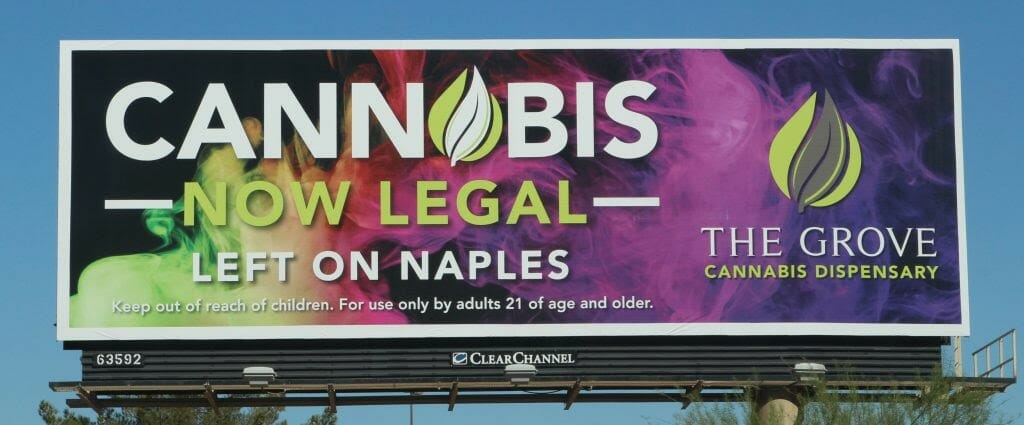
And here’s a billboard example from Weedmaps, displayed in the Seattle area:
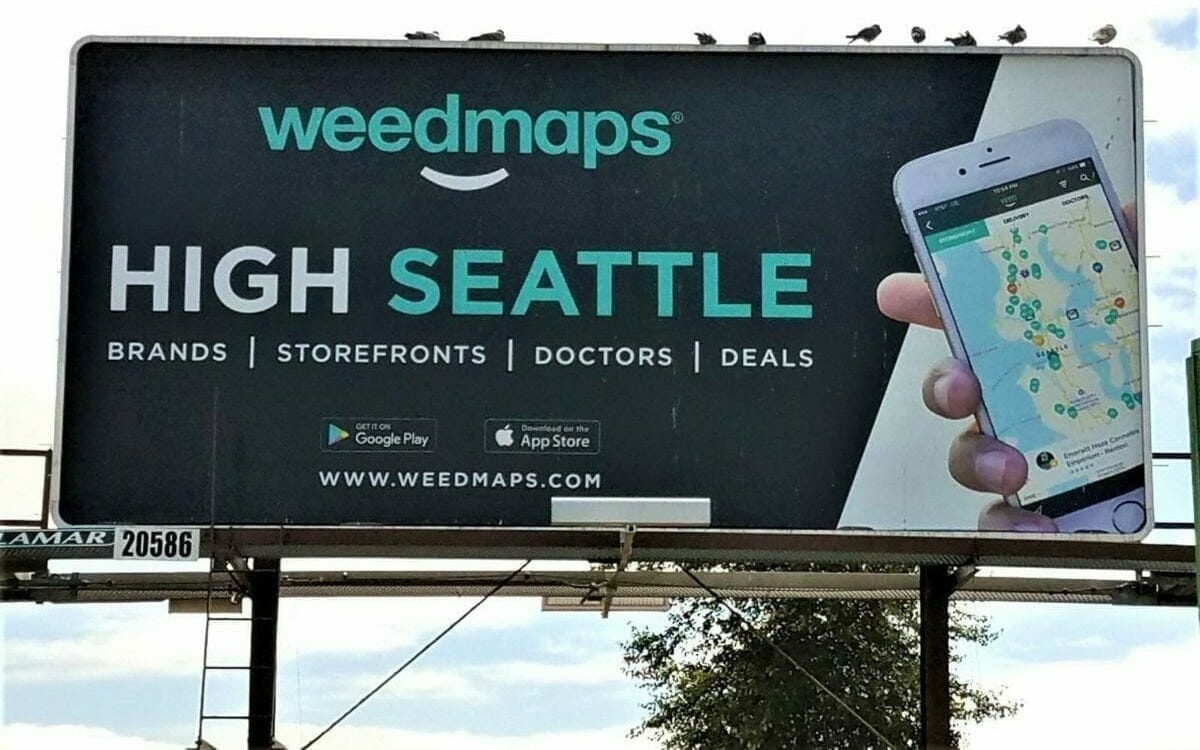
Billboards were particularly effective right as legalization began to hit states, since they were able to feed off the shock factor. But if you live in a state where cannabis has been legal for some time, you’ve probably grown used to seeing these companies advertised on billboards. That’s due, in part, to the fact that it is one of the few effective marketing channels that local stores can rely on to get in front of prospects.
Billboards provide a simple and effective way to advertise your cannabis brand. Keep in mind, though, that individual cities or the billboard owners will have their own laws or policies regarding cannabis-related advertisements.
2) Leverage Existing Audiences with Sponsorships
Building your own audience and customer base is always the ultimate goal for any company, but those that operate in highly regulated industries must think in more original ways.
So how do you build your own audience when you don’t have one to begin with? It’s the ol' chicken-or-the-egg scenario. But there is nothing stopping you from getting your advertisements in front of existing audiences through sponsorships.
Sponsorships may just be the perfect channel for cannabis advertising growth.
Many sponsorships can be attained through negotiation directly with the company that hosts the media or runs the event that you would like to sponsor, with no third-party go-between to worry about.
Here are a few of the different types of events or media that cannabis companies should consider sponsoring:
a) Podcasts
Unless you can find a local podcast, sponsoring podcasts might make more sense for national cannabis companies rather than small local pot shops. Still, podcasts are growing at an astounding rate:
- There are more than 850,000 active podcasts with over 30 million episodes.
- 51% of the U.S. population over 12 years of age listen to a podcast.
- 32% of the U.S. population listens to podcasts monthly.
There are thousands of podcasts that focus on cannabis specifically that would make excellent sponsorship opportunities for legal cannabis companies. This screenshot from the podcasting app Stitcher will give you an idea of how easy they are to find:
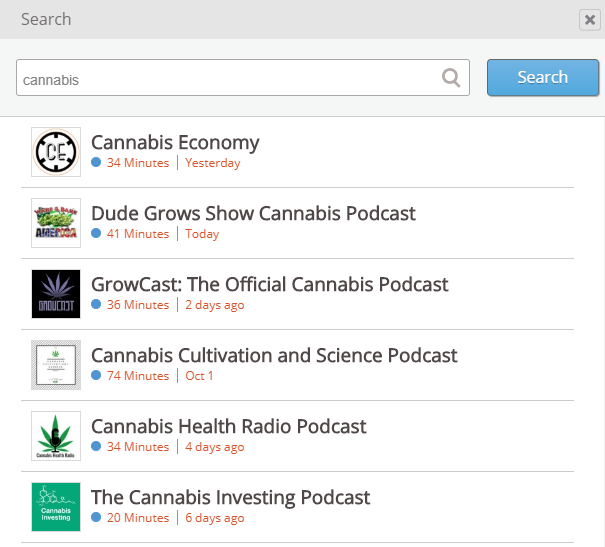
The best part? Podcasting is still young. Advertisers haven’t flocked to the channel yet, which means that sponsorships can be obtained for pennies on the dollar, compared to where the prices are likely to be in a few years.
Learn More: The Ultimate Guide to Podcast Advertising
b) Cannabis Trade Shows and Events
Cannabis trade shows and events also present excellent opportunities for sponsorship. Not only will they help you get in front of an engaged and loyal audience, but you will also get your brand in front of your industry peers, which can help you secure new opportunities.
Every trade show or industry event has different sponsorship options available and the popularity of the event will directly affect the price. If you have local cannabis events, those are likely to offer much more affordable sponsorships than national shows.
If you’re considering looking into sponsoring a trade show or local event, MMX maintains a database of cannabis-industry trade shows and conferences:
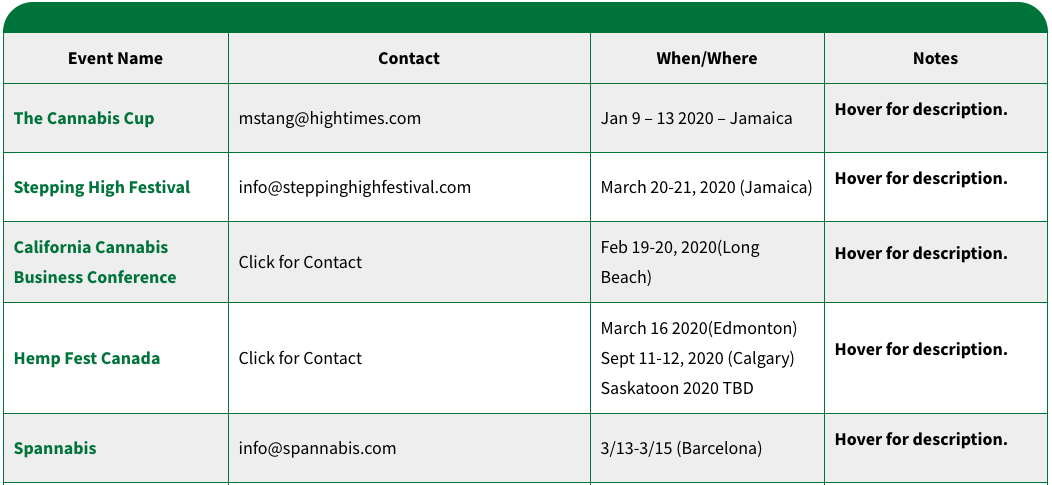
c) YouTube Channels
YouTube sponsorships have become increasingly popular in recent years. It’s important to note that youTube sponsorships are not YouTube ads; they are separate deals that are negotiated with the content creators.
A sponsorship can mean different things to different channels: It may reference a short video ad that runs at the beginning, end or middle of the video. Or maybe the host will mention your product in a video.
The cost of a YouTube sponsorship will depend on the industry of the channel and the number of subscribers the channel has.
Keep in mind that YouTube has its own terms of service and you’ll need to make sure that any sponsorships that you negotiate are allowed on the platform. YouTube video or channel sponsorships can provide a cost-effective way to reach a wider, highly engaged audience.
Book My Free (Creative!) Marketing Consultation
d) Local Community Events
You can sponsor events outside of cannabis-related events as well. Sponsoring a local event will help local businesses to increase awareness in their community and start to develop a reputation as a positive influence in the community — which is something that many cannabis companies struggle with.
Some examples of sponsoring a community event include:
- Chamber of Commerce meeting
- Local fairs
- Meetups
- Giveaways
e) Engage in Influencer Marketing
Who are the influencers in your industry or your local area? Who has the largest audience? Working out a sponsorship deal with them can be a shortcut to getting your brand in front of interested customers.
SocialBakers offers a free influencer search engine that you can use to identify influencers in your industry:
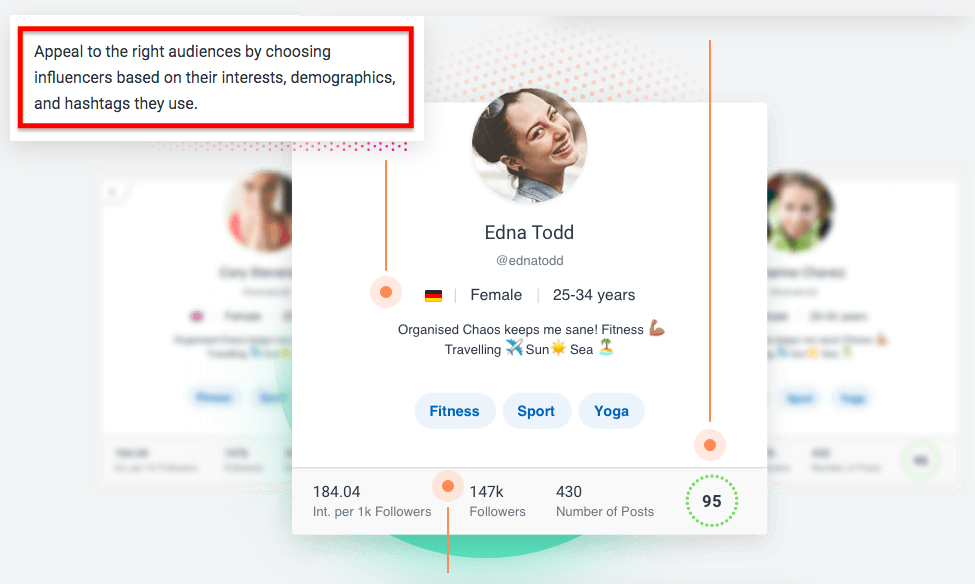
Learn More: The Ultimate Guide to Growing Your Business with Influencer Marketing
3) Plan Your Own Events
If you want to really ensure that your brand is front-and-center, you could plan a local event of your own. Even something simple like a Meetup or barbecue can be a great way to improve standing in your local community.
Larger national brands might consider hosting their own small conference. In recent years, we’ve seen small conferences, like those run by MicroConf, really take off in entrepreneurial circles. These kinds of small, inclusive industry events make for better networking opportunities and more meaningful relationships with those that you meet.
4) Partner with Complementary Brands
Partnering with a complementary industry brand can be mutually beneficial, because when they both operate in the cannabis industry, they are each likely to suffer from the same problems regarding marketing restrictions. A partnership can be a great way to grow brand awareness by leveraging the existing audience of your partner.
A great example of a cannabis-industry partnership that was advantageous for both organizations was between Canopy Growth, a cannabis product company, and Greenlane Holdings, a marijuana dispensary distributor:
“While this partnership largely flew under the radar considering the numerous acquisitions Canopy has made, as well as its massive global reach, it's a bigger deal than investors likely realize.”
Another example comes from Caliva, who made the first beverage partnership with Mood33 to deliver THC-infused beverages to California-area dispensaries:

Partnerships don’t have to be with companies that operate within your industry, either. Google partnered with Kit Kat to increase awareness of its previous Android update (called KitKat):
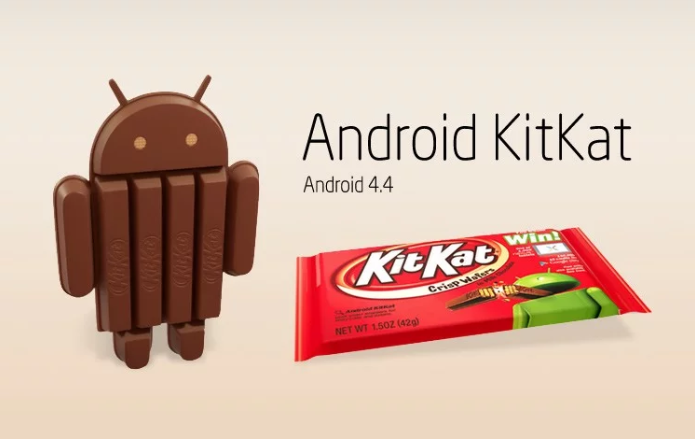
Partnerships can be a great way for cannabis companies to leverage new audiences, develop lucrative business relationships and grow awareness for their brand.
5) Pitch Major Publications & Journalists
Good ol' public relations. This practice is nearly as effective for cannabis companies as it is for organizations in other industries.
The only concern here is that some publications might be wary about running marijuana-related stories or promoting cannabis companies. But even those concerns can be mitigated if you can find the right angle to pitch. If you can hone in on an interesting newsworthy story that relates to your company, landing a deal with a big publication can potentially expose your brand to thousands of customers.
Because it can take some time to find out how to attract attention from journalists, use tools like HARO (Help a Reporter Out) or JustOutreach to locate potential targets that might be a good fit:

Learn More: 7 Steps to DIY PR: Building Relationships with Journalists without a PR Firm
Tips for Pitching Journalists and Editors
Pitching journalists and publication editors is part science and part art. There are a few consistent rules that you should follow to make sure you catch their attention. Remember, journalists, especially prominent ones, receive pitches all day long, so here's how to stand out from the stream of mediocrity they are used to:
- Do your research. Make sure that you are contacting the right editor or journalist and that they routinely cover topics that are similar to the one you are pitching.
- Provide some legwork. Everyone likes it when you make their job easy for them. Including a document with some sources for research, statistics or interesting insights may make them more likely to accept your pitch.
- Know your audience. Personalize your pitch. Reference previous articles they have published that led you to believe they were the right person to contact. Explain why your story is uniquely right for them.
- Keep it short but informational. Their time is valuable, just like yours. Keep your pitch to a few short sentences if you can. Tell them what the story is, why they should be interested in it, and provide some resources they might find helpful.
- Follow up. Journalists and editors are busy people. If you don’t hear back, it doesn’t necessarily mean that they aren’t interested. Follow up politely until your pitch is accepted or declined. Persistence can pay off here.
By doing your homework and making it easy for the journalist to say “yes,” you give yourself a better chance of getting your pitch accepted.
Book My Free (Creative!) Marketing Consultation
6) Create Content Experiences
Content doesn’t have to be limited to social media updates and blog posts. Zazzle Media found that 60% of companies struggle to produce content consistently, and 65% find it a challenge to produce engaging content.
Digging deeper and creating unique content experiences for your prospects and customers can help you stand out from the competition and give people a reason to tell others about your brand. You just have to get creative.
Here are a couple examples of clever content marketing experiences:
- With their YoutTube channel, BlendTec, a popular blender company, was able to generate tens of millions of views. They showed the power of their blenders by blending everyday household items like cell phones, glow sticks and even a crowbar. The tongue-in-cheek-style videos went viral and grew awareness for their brand.

- Another example comes from Zendesk. Every month, more than 1,000 people around the world were searching for the term “zendesk alternative” rather than clicking on the ZenDesk site. These types of keywords are typically filled with competitors, but this company bucked the trend by creating a complete minisite for the term which they turned into an alternative rock band. This ingenious tactic allowed them to rank #1 for the keyword for quite some time (still ranks in the top 10 today).
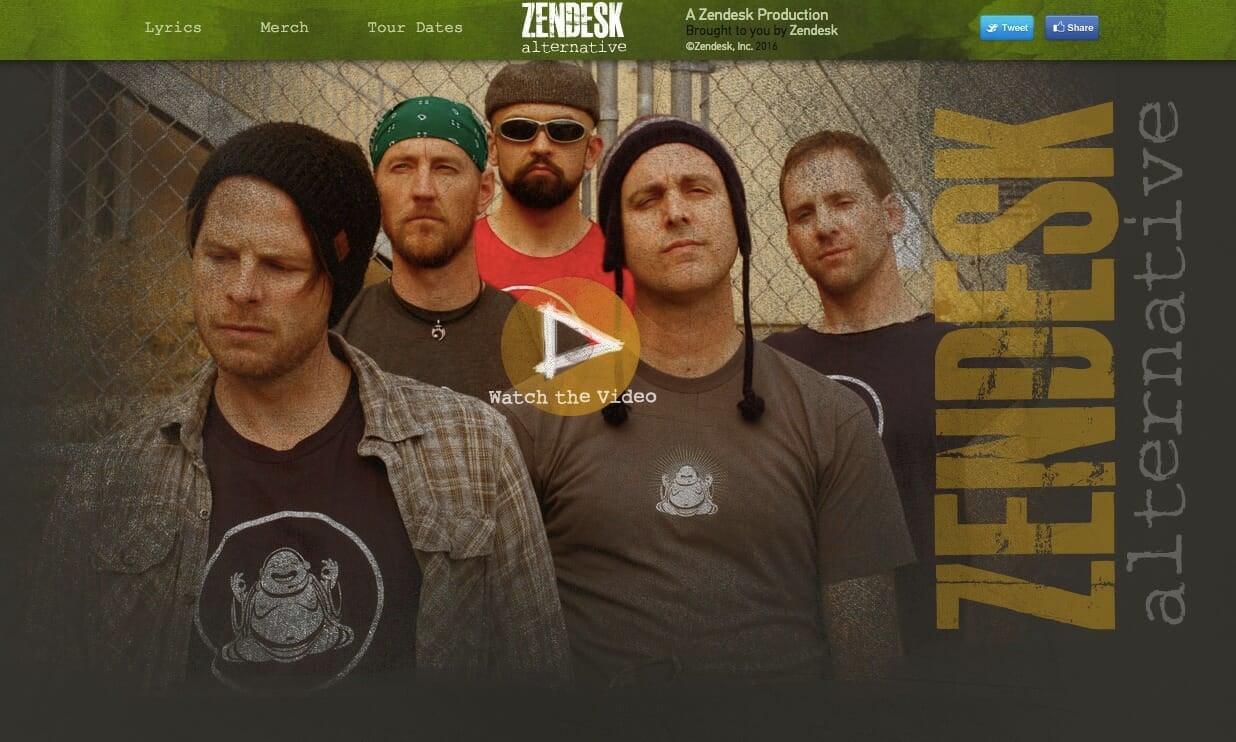
Learn More:
* How to Create a High-Performance Content Marketing Strategy in 2020
* 30 Ways to Come Up with Great Ideas for Your Blog Posts
* Beyond the Blog Post: 21 Inspirational Branded Content Examples
7) Expert Roundups Can Bolster Brand Relationships
In the cannabis industry where marketing opportunities are limited, it is sometimes as much about who you know as it is what you know.
Building relationships with industry experts and influencers can be extremely lucrative, and a quick way to get on their radar is by publishing blog posts that have become known as “expert roundups.” In short, you ask a question of experts and publish their responses, crediting them and their business in the process:
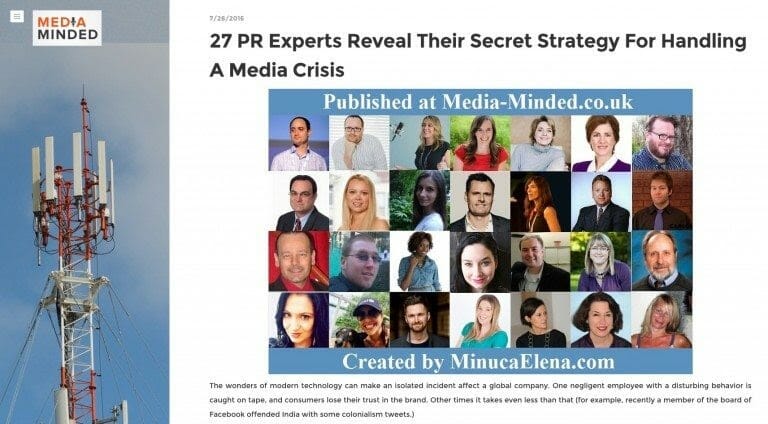
Not only does this strategy help you build relationships, but it also serves as a valuable resource to your prospects and customers. An effective roundup makes expert advice and opinions on specific problems digestible for your audience.
Book My Free (Creative!) Marketing Consultation
Creative Marketing for High-Regulated Industries
Finding reliable marketing channels can be difficult for cannabis businesses, but they aren’t the only companies that suffer from this issue. The gambling, adult entertainment, pharmaceutical, finance and medical industries all have their own strict, nuanced regulations and laws they have to consider, making it more difficult for them to get their brand in front of their intended audience.
By using your imagination to leverage existing audiences and build relationships, companies in those industries can gain an advantage over the competition and position themselves for long-term success.
The post Creative Marketing Strategies: How to Market a Cannabis Company appeared first on Single Grain.
from Single Grain https://ift.tt/2H3uk7Q

No comments:
Post a Comment